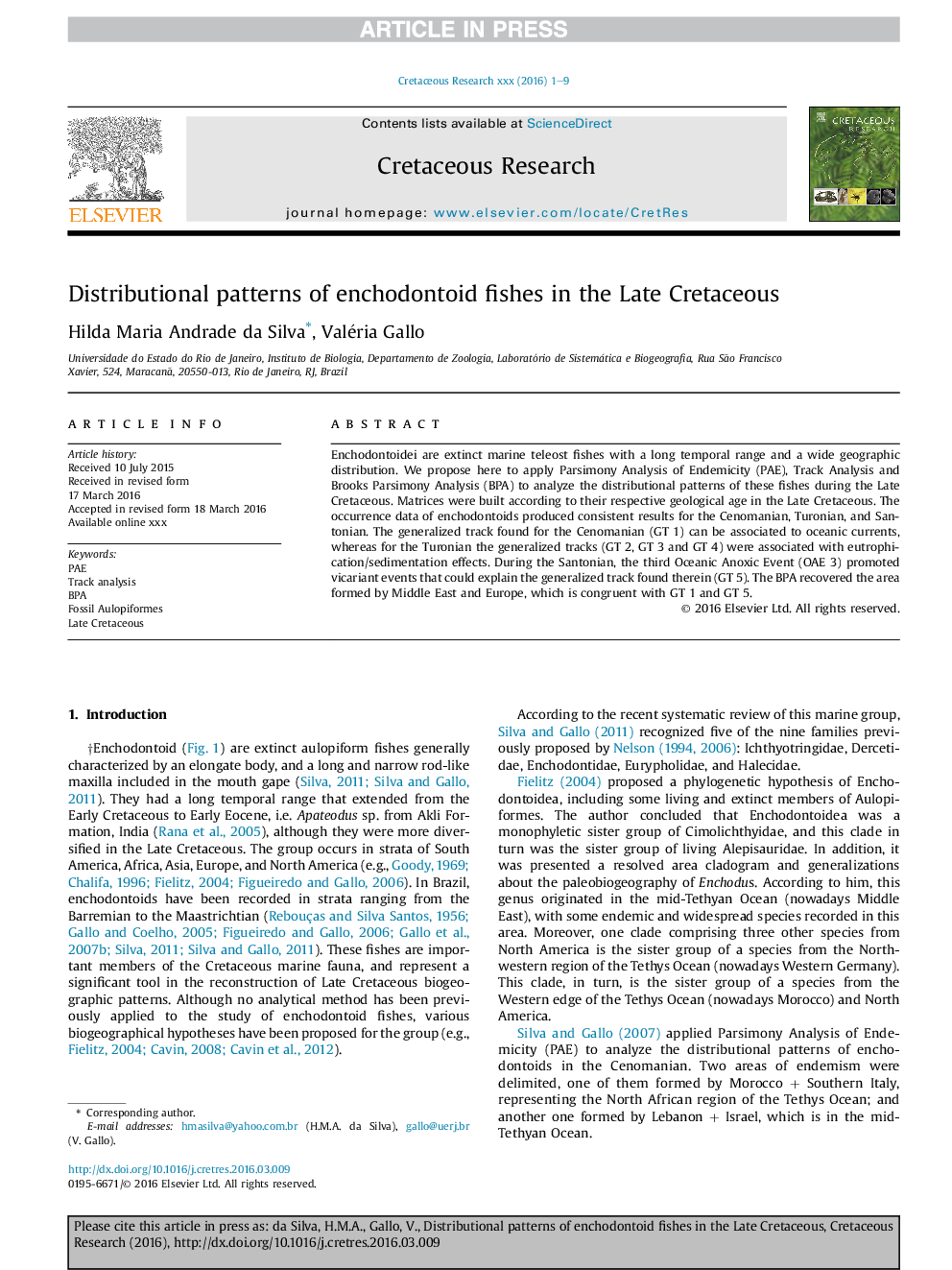| Article ID | Journal | Published Year | Pages | File Type |
|---|---|---|---|---|
| 6448180 | Cretaceous Research | 2016 | 9 Pages |
Abstract
Enchodontoidei are extinct marine teleost fishes with a long temporal range and a wide geographic distribution. We propose here to apply Parsimony Analysis of Endemicity (PAE), Track Analysis and Brooks Parsimony Analysis (BPA) to analyze the distributional patterns of these fishes during the Late Cretaceous. Matrices were built according to their respective geological age in the Late Cretaceous. The occurrence data of enchodontoids produced consistent results for the Cenomanian, Turonian, and Santonian. The generalized track found for the Cenomanian (GT 1) can be associated to oceanic currents, whereas for the Turonian the generalized tracks (GT 2, GT 3 and GT 4) were associated with eutrophication/sedimentation effects. During the Santonian, the third Oceanic Anoxic Event (OAE 3) promoted vicariant events that could explain the generalized track found therein (GT 5). The BPA recovered the area formed by Middle East and Europe, which is congruent with GT 1 and GT 5.
Keywords
Related Topics
Physical Sciences and Engineering
Earth and Planetary Sciences
Palaeontology
Authors
Hilda Maria Andrade da Silva, Valéria Gallo,
